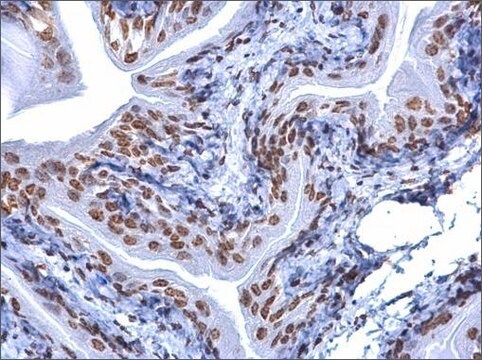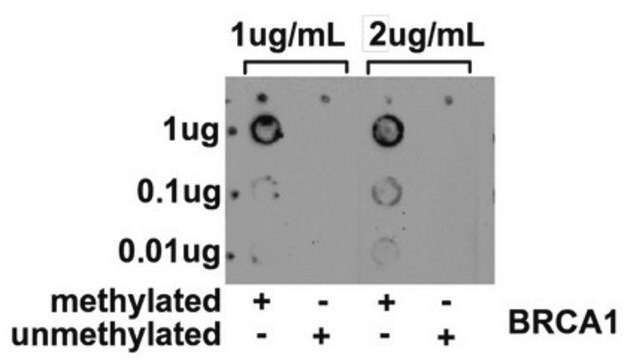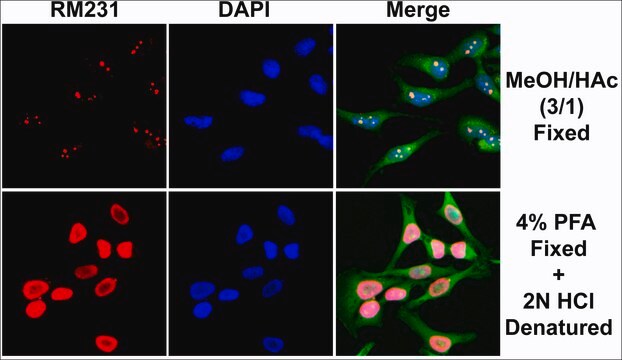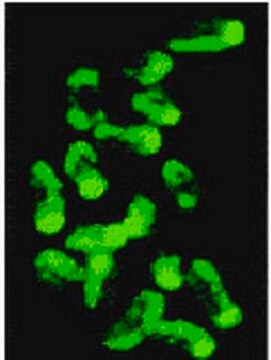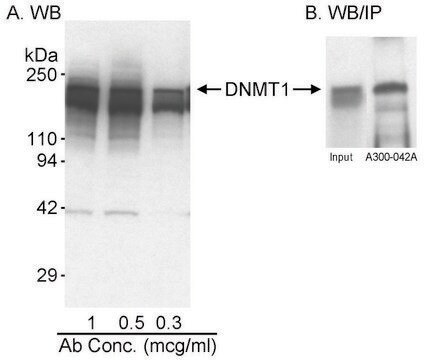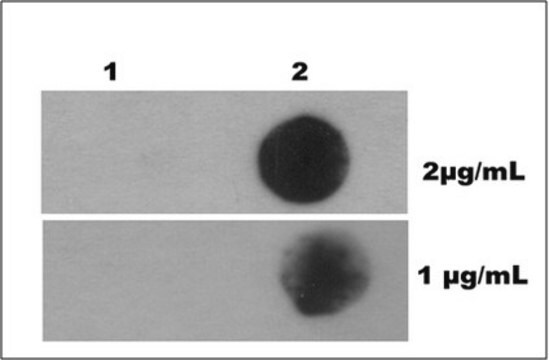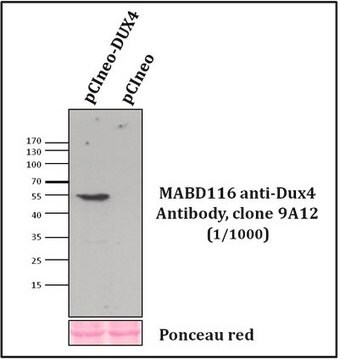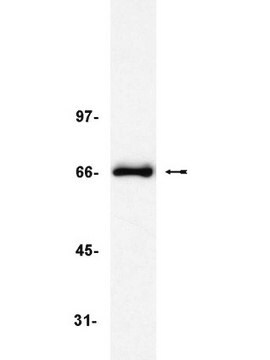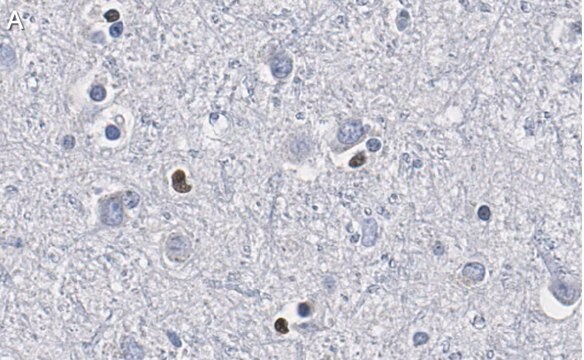MABE1081
Anti-5-Methylcytosine (5mC) Antibody, clone EDL MC-4
clone EDL MC-4, from mouse
Synonyme(s) :
5mC, 5-methylcytosine
About This Item
Produits recommandés
Source biologique
mouse
Niveau de qualité
Forme d'anticorps
purified immunoglobulin
Type de produit anticorps
primary antibodies
Clone
EDL MC-4, monoclonal
Réactivité de l'espèce (prédite par homologie)
all
Technique(s)
dot blot: suitable
immunoprecipitation (IP): suitable
Isotype
IgG2aλ
Conditions d'expédition
ambient
Modification post-traductionnelle de la cible
unmodified
Description générale
Spécificité
Immunogène
Application
Immunoprecipitation Analysis: 2.5 µg from a representative lot immunoprecipitated 5 ng of DNA with 5-methylcytosine (5mC) modification, but not DNA with only 5-hydroxymethylcytosine (5hmC) modification or unmodified cytosine (Courtesy of Jeong-Heon Lee, Ph.D.; Chad Clark; Tamas Ordog, M.D.; Zhiguo Zhang, Ph.D. Epigenomics Development Laboratory, Epigenomics Program, Center for Individualized Medicine, Mayo Clinic, Rochester, Minnesota, USA).
Epigenetics & Nuclear Function
Qualité
Dot Blot Analysis: 2 µg/mL of this antibody detected 25-100 ng of DNA with 5-methylcytosine (5mC), exhibiting less than 25% cross-reactivity toward 5-formylcytosine (5fC) and no detectable immunoreactivity toward 5-hydroxymethylcytosine (5hmC), 5-carboxylcytosine (5caC), or unmodified cytosine.
Description de la cible
Forme physique
Stockage et stabilité
Autres remarques
Clause de non-responsabilité
Vous ne trouvez pas le bon produit ?
Essayez notre Outil de sélection de produits.
Code de la classe de stockage
12 - Non Combustible Liquids
Classe de danger pour l'eau (WGK)
WGK 1
Point d'éclair (°F)
Not applicable
Point d'éclair (°C)
Not applicable
Certificats d'analyse (COA)
Recherchez un Certificats d'analyse (COA) en saisissant le numéro de lot du produit. Les numéros de lot figurent sur l'étiquette du produit après les mots "Lot" ou "Batch".
Déjà en possession de ce produit ?
Retrouvez la documentation relative aux produits que vous avez récemment achetés dans la Bibliothèque de documents.
Notre équipe de scientifiques dispose d'une expérience dans tous les secteurs de la recherche, notamment en sciences de la vie, science des matériaux, synthèse chimique, chromatographie, analyse et dans de nombreux autres domaines..
Contacter notre Service technique